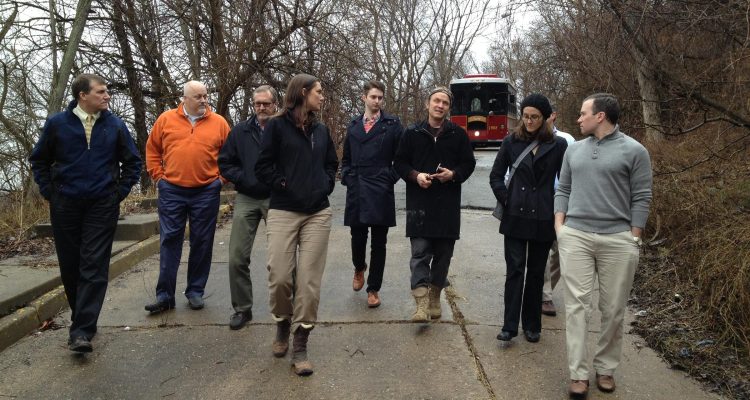West Virginia Public Broadcasting and Weelunk.com
Listen to story here: WVPublic.org
Momentum continues to mount behind local food and local economic development efforts in the Northern Panhandle. Wheeling was one of the top picks in a national Local Foods, Local Places Competition. As a result, local organizations are receiving technical assistance from multiple state and federal agencies to help capitalize on the growing demand for local foods. Meetings with federal agency representatives began last week.
Local Places Protecting the Environment?
The Environmental Protection Agency initiated the national Local Food, Local Places program. The idea is to bring federal, regional, and state agencies together to help find and support existing local food and economic development efforts. Why would the EPA get in on the local movement?
EPA policy analyst Melissa Kramer explains that one reason is to promote lifestyles that rely less heavily on automobiles and all their emissions. She says the local life could go a long way toward that end.
“When you have a downtown that’s vibrant, that people want to live in, that has all the services that people need, ” Kramer said, “people have options for getting around that don’t involve driving. You find that there are a lot of people who want to walk, who want to bike.”
Kramer says that is healthier for community members, healthier for the environment, and healthier for the economy because dollars wind up staying with local businesses.
Federal, Regional, State, and Local Converge
Folks came into Wheeling last week from Charleston, W. V., Durham, N. C., and Washington, D.C., representing EPA, the U.S. Department of Agriculture, the Appalachian Regional Commission, the State Department of Highways, and the U.S. Department of Transportation. These partners met with local Wheeling groups to talk about how to promote a local food system and grow the local economy in general.
It all started with a city tour on one of Wheeling’s trolley busses.
One of the tour guides was the director of the nonprofit Reinvent Wheeling, Jake Dougherty. He heads up one of three organizations that joined together to apply for the federal Local Foods, Local Places Grant. Other organizations include Grow Ohio Valley and the Wheeling National Heritage Area Foundation.
“Of the over 90 applications just in the Appalachian region, Wheeling stood out among all of them,” said Wilson Paine, a program analyst from the Appalachian Regional Commission who was involved in reviewing applications for the Local Foods Local Places Grant.
“Wheeling is emblematic of what a lot of Appalachian towns are going through right now which is searching for what their identity is going to be in the 21st century and how they can focus on the local aspects of building an identity,” Paine said.
“Wheeling is emblematic of what a lot of Appalachian towns are going through right now which is searching for what their identity is going to be in the 21st century and how they can focus on the local aspects of building an identity,” Paine said.
A Perfect Storm
Paine says there’s a perfect storm in Wheeling, combining youthful leadership, local food and area revitalization efforts, and ongoing region-wide partnerships. He says the existing infrastructure in Wheeling, combined with an engaged community, made Wheeling an ideal candidate for technical assistance.
Growing the Ohio Valley’s Local Food System
Executive director of Grow Ohio Valley, Ken Peralta, took a lot of questions during the tour of Wheeling. GrowOV is already deeply engaged in laying groundwork for a local food system in the region. In addition to the greenhouse, GrowOV has built multiple community gardens and a small organic farm inside the city. It also has wheels in motion, so to speak, for a mobile vegetable market that will serve several counties in the region starting in June.
In addition to visiting some local food initiatives that are well on their way, federal and local partners visited a few areas of town that have been abandoned because they’re too steep to develop residentially or commercially. One hillside is slated to be planted with fruit trees and berries. Another, that overlooks all of downtown Wheeling and the Ohio Valley, will be a green, public space of some kind. Action plans that detail what, when and how are being developed.
Peralta is hoping for help testing water as well as engineering ideas or resources to help manage stormwater that flows off of these steep hillsides. He and his colleagues are enthusiastic about the raw resources that seem abundant in Wheeling.
And the Enthusiasm is Contagious
Jake Dougherty of Reinvent Wheeling says there’s now a critical mass of people in and around Wheeling who are dedicated to turning their “dying city” into a thriving Appalachian town. He also admits that new industrial development in the region could be playing a role in bolstering the economy over the last five years, perhaps adding to that growing sense of hopefulness.
“But what I think is great, and what I think we have learned most about our economy from the past,” Dougherty said, “is that the conversations we are having are not centered around a single industry; they are centered around the diversification of our economy.”




